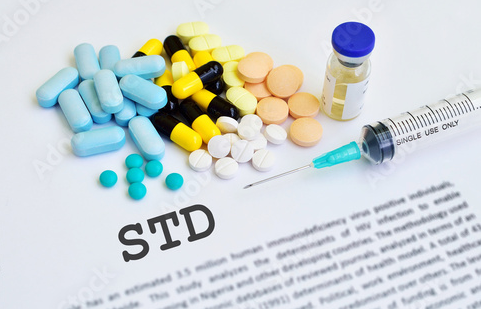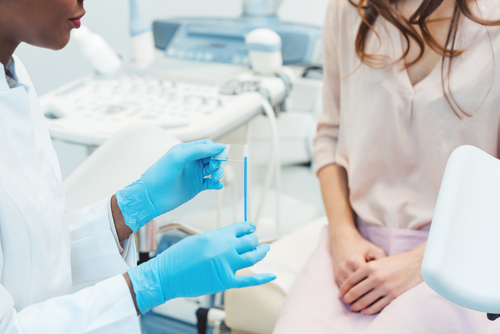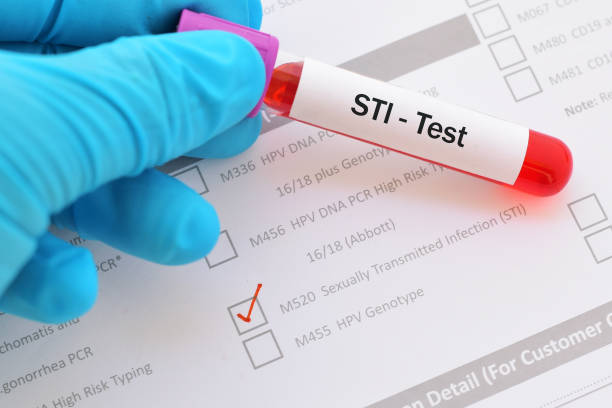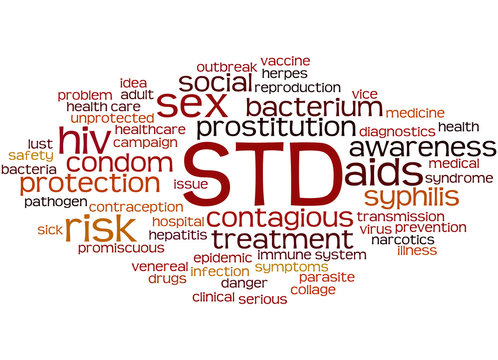All you need to know about STDs: Types, Causes, Preventions, and Myths
8 minuteRead
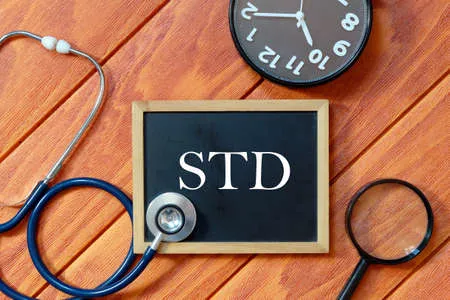
STDs or Sexually Transmitted Diseases are very important to our sex education but despite that, it is ignored by many people. Here is everything you need to know about STDs, their types and more. So, read on.
“The main hope of a nation lies in the proper education of the youth”, something Erasmus believes in. However, when it comes to real education about sex and related physical activities, nobody wants to talk about it. Take, for instance, Sexually Transmitted Diseases or what we usually know as STDs. Talking about contacts and diseases is a very significant, and yet most ignored, part of sex education that we need to look at.
After a certain age, sex becomes an exciting thing but very few people care about the precautions to it. That often leads to STDs. Now, what we need to do is understand these well to stay safe and keep our loved ones safe.
So, let’s know everything about STDs and how it is important for a safe-sex practice.
What are STDs?
The full form of STD is Sexually Transmitted Diseases and it clearly tells you the STD meaning. Anyway, these are the infections, illnesses, or diseases that can spread from person to person via sexual intercourse or contact. These contacts include genital to genital, oral, vaginal, and anal. Commonly, STD spreads when a body fluid from one person, who has STD, is transferred to another person during physical contact.
There are some common types we know and there is nothing to be embarrassed about if you get one. But, the worst part is, some of these STDs are not commonly known or show no particular symptoms. So, chances are people who may have it can spread it because they are unaware of its presence.
Well, thanks to medical science that we have a clearer knowledge of how to figure one out. But more on that later.
Types of STDs
Moving on, here are the types of STDs you must know about. I am sure you must have heard about at least 2 of them before, still, the concept is not clear. So, here are the STD types for you.
1. Gonorrhea
Gonorrhea is one bacterial STD that is also known as ‘The Clap’. In this one, patients usually have a white, green, yellow, or beige color discharge with either pain or irritation. Moreover, this disease can pass on from a pregnant mother to child.
2. Chlamydia
Chlamydia is another disease that spreads through bacteria during sexual intercourse. This infection rarely shows any symptoms. If left untreated, this can lead to infertility or even infections to other body parts.
3. HPV
HPV or Human Papillomavirus is one of the most common STDs that spreads from one person to another through an intimate skin touch. Unfortunately, this one is an incurable STD disease that can even lead to cancer if ignored.
4. Syphilis
Syphilis is also a bacterial disease that is hard to notice at an early stage. This often leads to small sores called ‘2’ that appear on genitals, anus, or even around the mouth. Nonetheless, if syphilis is left untreated, it can lead to many major diseases related to vision, brain, heart, and hearing.
5. HIV
Who doesn’t know about HIV or what medical science calls it ‘Human Immunodeficiency Virus’? These non-curable viruses damage the immune system badly and, if ignored, can lead to cancer. HIV stage 3 is known as AIDS (Acquired immunodeficiency syndrome). Although, the good news is today’s treatment prevents the patients to reach that stage.
6. Pubic Lice
Another name of this type of STD is ‘Crab’ which is the name of pubic lice. These tiny insects live on human blood but nothing to worry about because there are proper medications available to treat this one.
7. Trichomoniasis
Trichomoniasis, or what people usually call ‘Trich’, spreads via a tiny protozoan organism from genital contact. This one is a curable STD that shows minimal symptoms. Moreover, one symptom that indicates Trich is the unpleasant smell of genitals.
8. Herpes
Herpes is the common name of HSV aka Herpes Simplex Virus that usually comes in 2 forms HSV-1 and HSV-2. It is one of the non-curable STDs that mostly happens due to oral sex.
9. Other types
These include some of the less known ones such as Chancroid, granuloma inguinale, scabies, and more.
A bunch of causes
Just like any other disease, there are some of the commonly known STD causes that you must know about. It often spreads through 3 means:
- Virus,
- Bacteria, and
- Parasites.
But there are ways these can be transferred from one person to another. To name a few:
Unprotected sex
In the heat of the moment, people usually don’t care much about using protection and engage in sexual activities without thinking about the repercussions. This becomes one of the biggest reasons to attract STD unknowingly. Also, this is not just about intercourse but also happens during oral acts too.
Skin tear
Having sex with someone who is tested positive for such illness increases your chances of getting infected too. However, even if you are using protection you can still have it. Especially when there is a tear on the infected person’s skin. That’s your indication. Watch out.
Ignorance
This ignorance is more about medical ignorance. Regular checkups, regular medications, and all are necessary to treat your STD right and stop its transmission. Ignoring your medical requirements can become the biggest hazard to your sexual lifestyle.
Multiple partners
More partners? More will be the risk of having an STD. Having sex with more and more people increases your chances of infections because the rate at which transmission happens increases way too much. Also, you don’t always talk about sexual history when you involve in intimate relations with a new person every day.
Non-sexual acts
There are many non-sexual acts as well that are generally known to spread viruses and bacteria. Some of the common ones are using needles or syringes while having injections, piercings, or tattoos. For example, there are 0.23% or 1 in 500 chances of transmitting HIV via a needlestick that contains the blood of an HIV-positive person.
The above-mentioned causes are just a few of the common ones. Transfer of diseases or infections can happen through various other ways or actions. So, it’s better to stay safe and go with the precautions. But before that, you must know the symptoms that indicate the infection if you catch any.
How to figure it out? (STD Symptoms)
As we talked about earlier, some STDs are hard to identify because they don’t show any symptoms. However, it’s not the case with any of these diseases. So, here are some of the common symptoms you may know.
- Genital soreness
- Genital swelling or around it
- Bumps
- Rashes
- Dry skin
- Abdominal pain
- Fatigue
- Itching while urinating
- Urine Burning
- Pain while peeing
- Fever, headache, and general illness feelings
- Pain during intercourse
- Vaginal discharge (other than normal)
- Penis or rectum discharge (symptoms of STD in men)
- Pelvic pain
Types of STD tests
It’s not like any of the symptoms discussed just now are an indication of an STD disease. However, it is best to get tested to make sure you are on the safer side. But what types of tests are there? You may have to get:
- Blood test
- Urine test
- Saliva test
- Discharge test
- Genital swab test
- Erectile swab test
Common STD Myths and Facts
Sex education often comes with the biggest misconceptions. The same thing happens with the diseases that come with it. So, down there are some of the common myths you will hear about STDs, and let’s debunk them and know the STD facts.
1. You can tell by looking
People often think they can figure out an STD or STI just by looking at it or smelling it. There is no such thing because most of the STDs may not even show you signs like bumps, soreness, redness, swelling, or odor.
2. You can get it by sharing toilet seats.
Going to the public washrooms or using someone else’s may not give you an STD or STI unless there is a transfer of fluid or direct touch. You may get other infections but not STD.
3. Once you are treated for one STD, you are immune to it forever.
This is partially true because there are diseases like HPV that have a particular vaccine to prevent them. However, when it comes to other types, there is no vaccine to stay away from the infections. So, once you are treated for a disease, don’t assume you are immune to it or any other disease.
4. If you are STD-free (tested), your partner does not have to get tested.
If you are immune to STD doesn’t mean your partner is protected too. So, regular checks and tests are equally important for both partners.
5. Lesbians or Gay couples cannot catch most STDs
There is no such thing as a heterosexual STD. So, no matter what gender your partner has, there are equal chances to have the strangest and even most common infections.
How to prevent STDs?
Some STDs can be cured whereas others can be controlled through medicines. However, it is still the best solution to prevent it right from the beginning. So, what can you do to stay away from it? Down there are some ways to do so.
- No sexual engagement: I know you must be wondering that having no sex is an obvious answer but it’s not that. Abstinence is when you don’t touch genitals and often go for other intimate activities. When you do not have any sexual contact with another person, it is like a 100% chance of containing no sexual diseases.
- Regular Checkups: Having STD tests every year is one of the safest ways to prevent such illnesses. These regular checkups ensure your safe and sound sexual health.
- Limiting sexual partners: Regular sex with different people gives you more chances to have STD. That’s why experts suggest you have limited partners for sexual intercourse to limit your chances.
- Talking about sexual history: There is a reason why you must talk to your partner about your sexual history. This might help in better intimate understanding and hence, help them know whether or not to involve.
- Latex Barriers: You must be wondering ‘Do condoms prevent STD 100 percent?’ So, here comes the prevention most of us know about. These are barriers that prevent the transfer of body fluids. You can do that by using external condoms, internal condoms, or even dental dams.
- Through sex toys: Toys often make your sexual activities more fun. However, when it comes to health, it is better not to share them with anyone and clean them before and after using them thoroughly.
Whichever method you choose to protect yourself and your partner, it is very VERY important to communicate clearly. All of these methods may mean different to your partner. Therefore, it is necessary to stay on the same page for both of you and make an informed decision.
Conclusion
Around 6% of Indian adults are diagnosed with STD and RTI (Reproductive Tract Infections) every year. Most of these infected people prefer to ignore the signs rather than taking them seriously and getting the right treatment. You don’t want to entertain such diseases which is why it is important to stay alert every time. So, now that you know everything about STDs and STIs, it’s your responsibility to take the right steps and get yourself tested whenever needed.
Write, Record and Answer! Consume Unlimited Content! All you need to do is sign in and its absolutely free!
Continue with one click!!By signing up, you agree to our Terms and Conditions and Privacy Policy.




